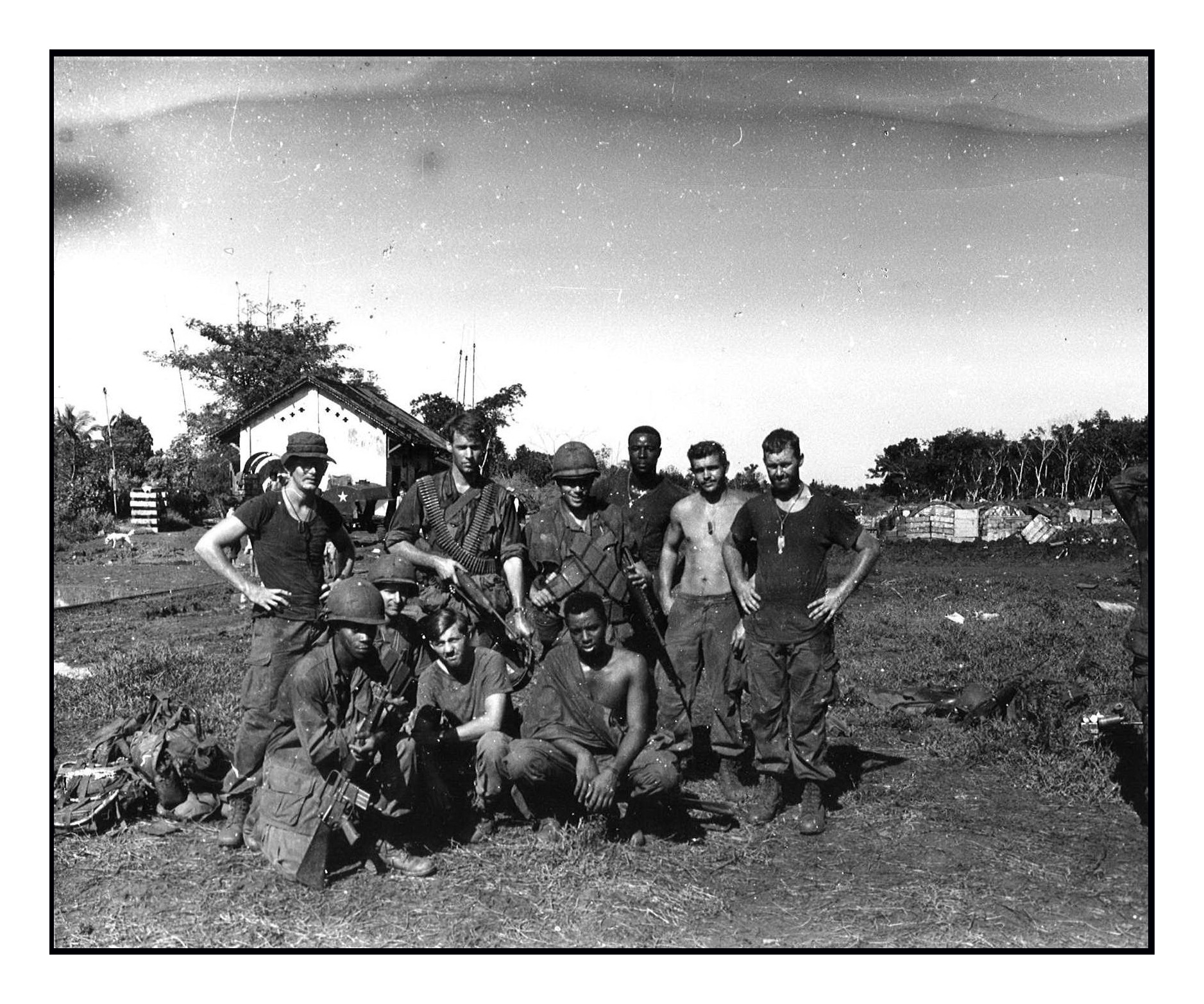
Jim Hardy, top-second from left, USARV Army Artist Team #9, and members of Alpha Company, 2nd Battalion, 3rd Infantry, 199th LIB in the field, late October 1969 at An Loc Railroad Station near Tan Lap. Left to Right: Mark Muehe, Jim Hardy, Albert Beltran, SGT Perry, Lamar Watts, and Tracy Sunde.
Hello TOC,
This is a long letter. I hope you will read it.
I was drafted in September 1968 and did two tours in Vietnam, DEROS'ing in September of 1970.
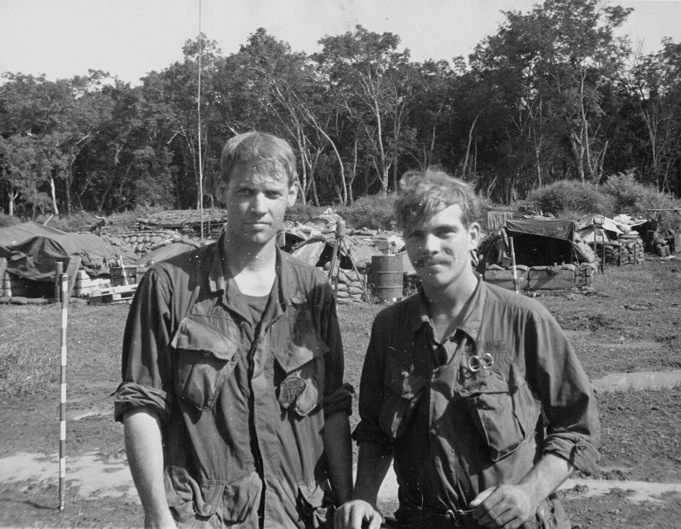
Jim Hardy and Doc Mollett, Alpha Company, 2-3rd Infantry.
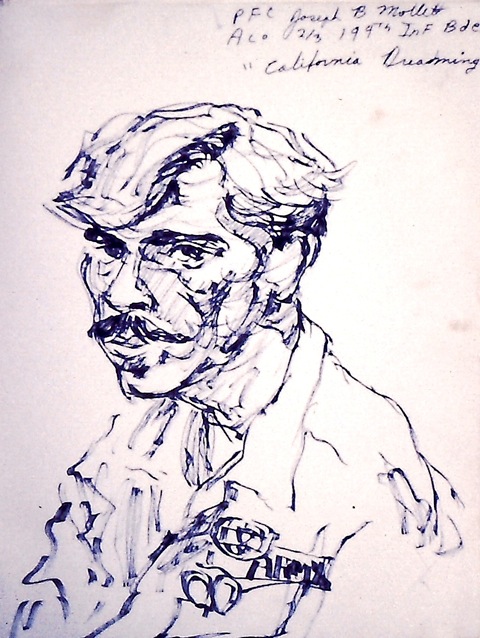
PFC Joseph B. Mollett, A Co., 2/3, 199th Inf Bde, "California Dreaming."
Surfing the web recently, I typed in FSB Libby out of curiosity and came across your website. In "2-3 Infantry Faces 1969," I found a few of the grunts I had sketched during a period of about a week when I was assigned TDY to your unit as a member of Army Artist Team #9 in October, 1969.
I accompanied an Alpha Company squad on an ambush patrol in a rubber plantation and was with Charlie Company when it was on a joint operation with the 11th Armored Cavalry. One evening, I rode out with Major Loeffke in his jeep as he met up the owner of the rubber plantation, and after that, with one of his units where he dropped me off. As I recall, his driver was getting short and not happy about the late hour we were heading out into the jungle.
Today is Memorial Day and I am thinking about Vietnam and the soldiers I was with, especially PFC Mark Muehe and Lieutenant Bill Little who were both killed shortly after I'd left them. I do not see their photos among the others or their names on your memorial page. I sketched both of them. I always asked the soldiers to sign my drawings as it seemed to me that it gave them more meaning. They'd write things like, "Hi Mom," or jot down their hometowns, or something to their sweethearts back in the world.
If not too much trouble, can you can add some of these sketches and photos, especially Mark's and Bill's, to your website to honor their memory? The original drawings were sent back to Washington as part of the Army's Art Collection at Ft. Belvoir, Virginia.
In the late 1980s, I'd learned of Lt. Little's death while reading Michael Lanning's book, "Vietnam, 1969-1970: A Company Commander's Journal." Attached is Lieutenant Little's sketch and a photo of him signing it about 2 weeks before he was killed.
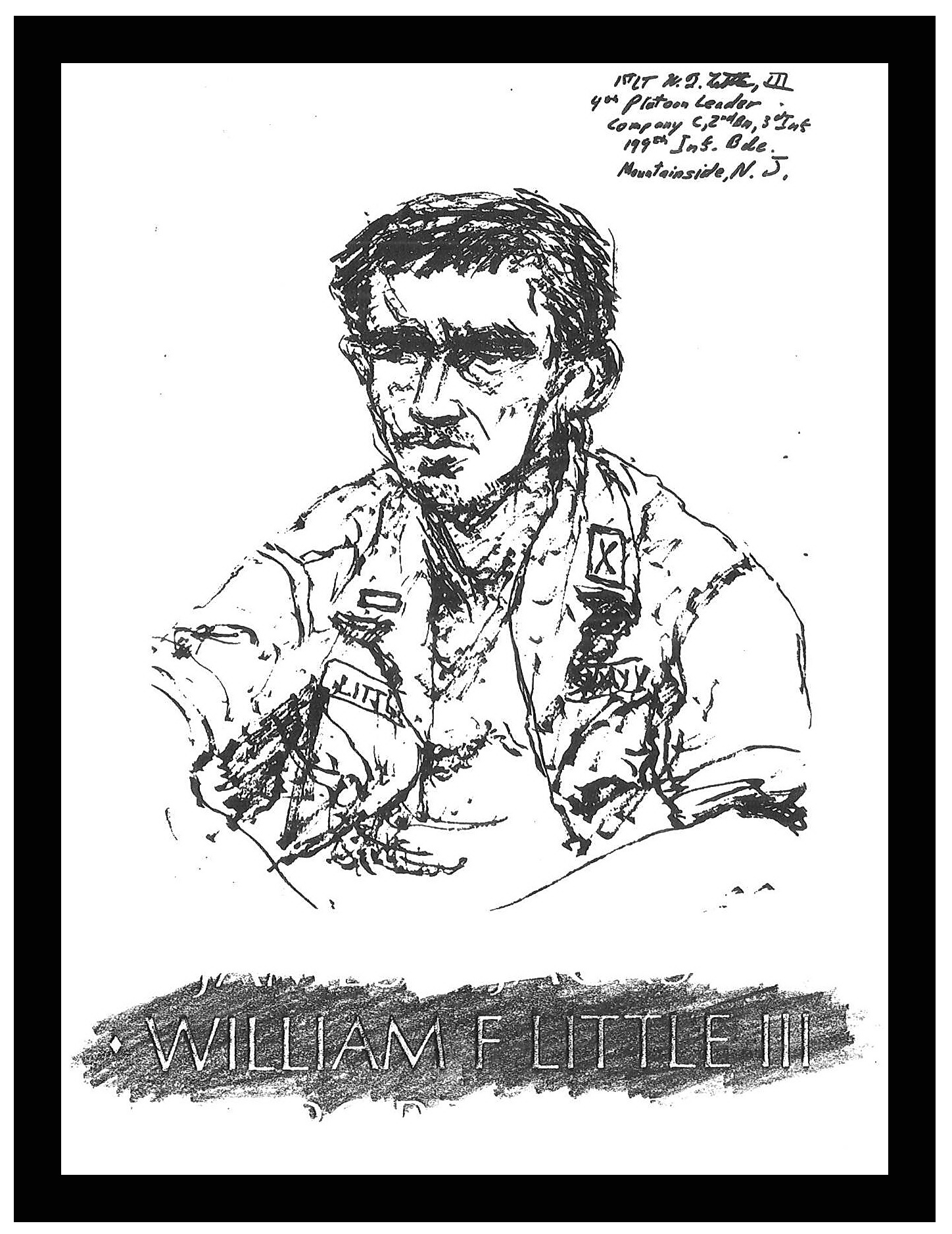
Sketch of 1LT Bill Little, 4th Platoon Leader, Company C, 2nd Bn, 3rd Infantry.
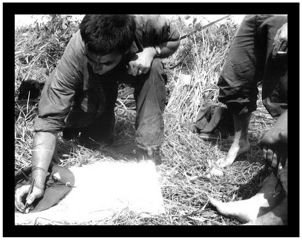
Lt. Little signs the above sketch.
In the morning after the ambush assignment with Alpha Company's squad, we were eating, taking in the claymores, and cleaning up the site before moving out. During that time, I sketched Mark Muehe and he had written, "I want to go home," under his name on the drawing.
.jpeg?1651366345342)
On the way to my next assignment, the 82nd Airborne, the LOACH pilot told me to switch over to his radio frequency.
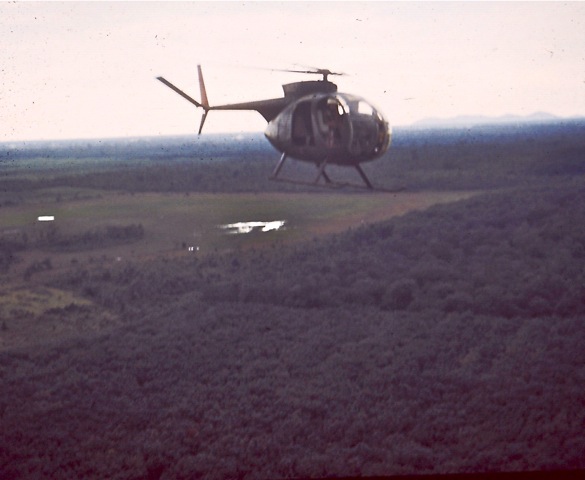
I was listening to the Rolling Stones on my frequency and he was getting directions where to take me on his. He said, "your buddies just got ambushed." I was shocked and wanted to go back to help but he said we were overdue at my next assignment and his orders were to deliver me to the 82nd.
The squad had cut off radio communication during the night of our ambush and I couldn't be located by those looking for me. I was told Charlie could tap into our frequency and find us from our own communications. The chopper pilot then said he'd made a mistake and that it was another unit that had just been ambushed. I didn't know what to believe and felt guilty for not having been with them or gone back to help if it had, in fact, been the squad I'd been with.
I later learned from another soldier, who had been wounded in the ambush that Mark and John Martin were killed on December 5th, 1969, about seven weeks after I had accompanied them on their night ambush in the rubber plantation. In the mid 1980's, I found Mark's father, Art Muehe, in the phone book and called him. I told him that I had a copy of the sketch that I had done of his son and asked if he would like it. He said yes, and I sent him a copy. He wanted to know more about Mark and what he was like when I was with him. Art and his wife, Margaret, Mark's mother, came out from Bridgeview, Illinois, to visit me in San Francisco. Art wanted to see the Golden Gate Bridge during his visit, and I took him to Fort Point at the south end of the bridge.
As we were sitting on the bluff looking out to the Farralon Islands, Art told me about coming home in World War II in 1945 and sailing under the bridge.
Then, I told him about me flying over the bridge when I returned form Vietnam in 1970 in a Braniff jet-liner, and the pilot, over the loud speaker saying, "Welcome Home Boys!" Er...make that "Welcome Home Men!"
It was the only Welcome Home I ever heard until the early 1980's when the Vietnam Veterans Memorial was dedicated in Washington, D.C., in 1982.
The pilot circled the bridge in a clockwise, then a counter-clockwise direction so we all could see it.
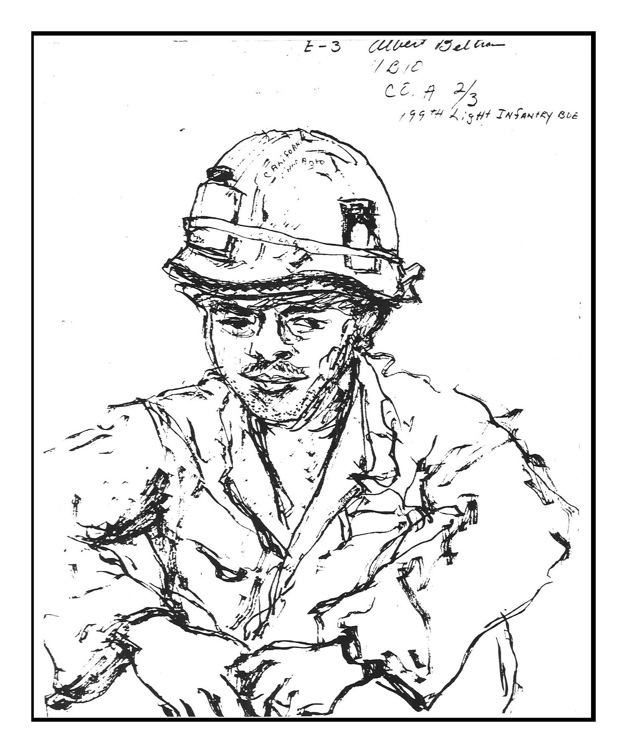
PFC Albert Beltran, Co. A 2/3
Then, Art, Mark's father, told me that the day Mark was killed, he had been asleep in his bed in Bridgeview. He told me he felt something touching his toe, and he woke up and looked at the foot of his bed where he saw Mark standing. He said that Mark had said, "I'm home, Dad. Don't worry, everything's OK."
.jpeg?1651366345369)
CPL Mark Muehe, center and Albert Beltran, left, both of Alpha Company.
I was reassigned to a laundry detail at my original training company at Fort Ord, California, after my TDY tour. As strange as it sounds, I missed the grunts in Vietnam and felt I should be back there with them. I don't know if it had to do with the adrenaline rush or guilt or what? Nothing made much sense to me back at Fort Ord.
I went back to Vietnam in March and was assigned to the 221st Signal Company for a month before being assigned to the 1st Aviation Brigade as a photographer- combat artist and participated in various operations and the Cambodia Invasion, where I lost a few more buddies.
I never believed in our mission in Vietnam or believed in the Falling Dominoes Theory as did my dad who had been a WW2 Navy pilot. It's the old story about soldiers; they fight for each other and not the cause, if the cause means anything at all.
I always ask myself, why Mark? Why Lt. Little? Why the others and not me? It's all luck.
That's all,
Thank you for listening,
Jim Hardy
Sketches done in the field by Jim Hardy, USARV Army Artist Team #9, in late October, 1969, with Alpha and Charlie Company, 2-3rd Infantry personnel.
.jpeg?1651366333047)
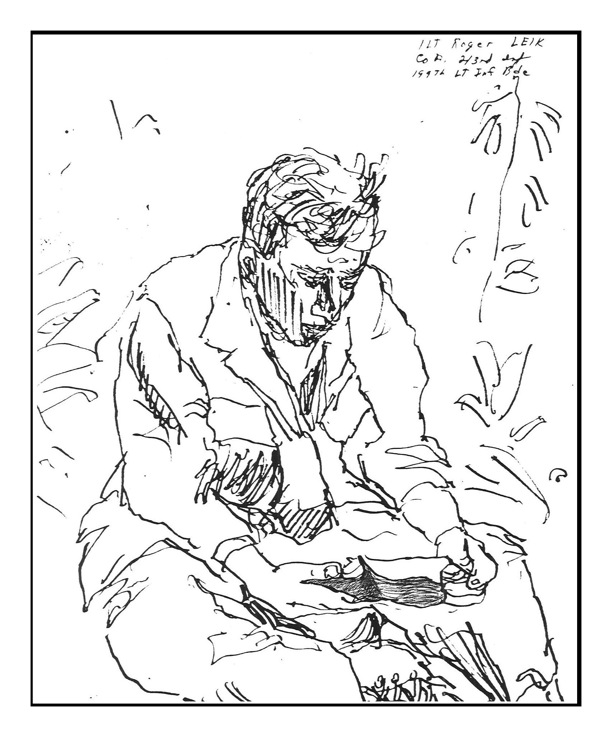
1LT Roger Leik, Co. A 2/3
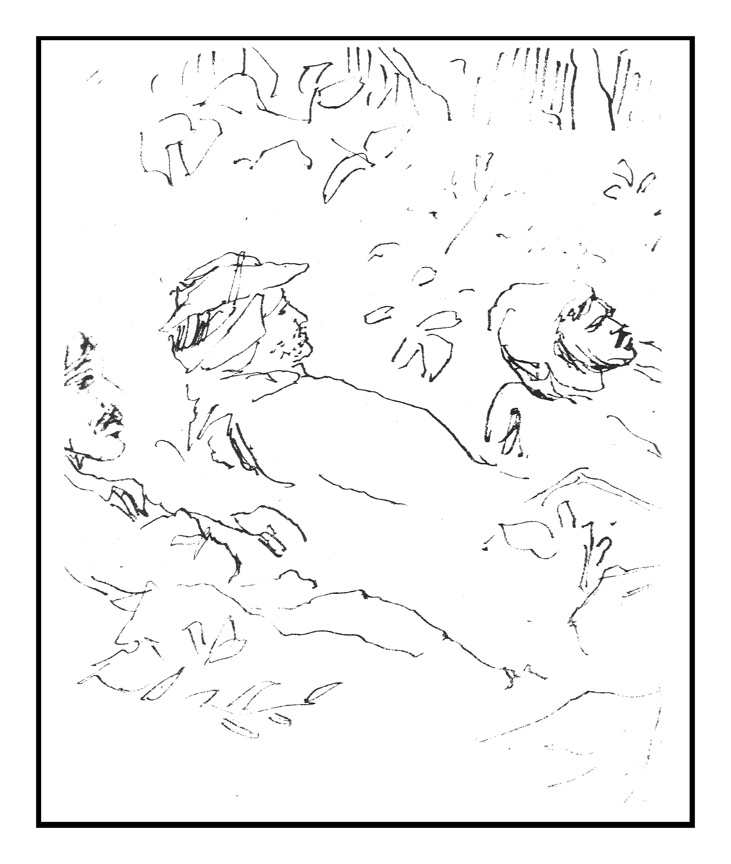
Night ambush. Claymores set, security out and LP's/OP's in position. Three tired grunts from A/2-3 huddle under ponchos for another miserable night in the bush.
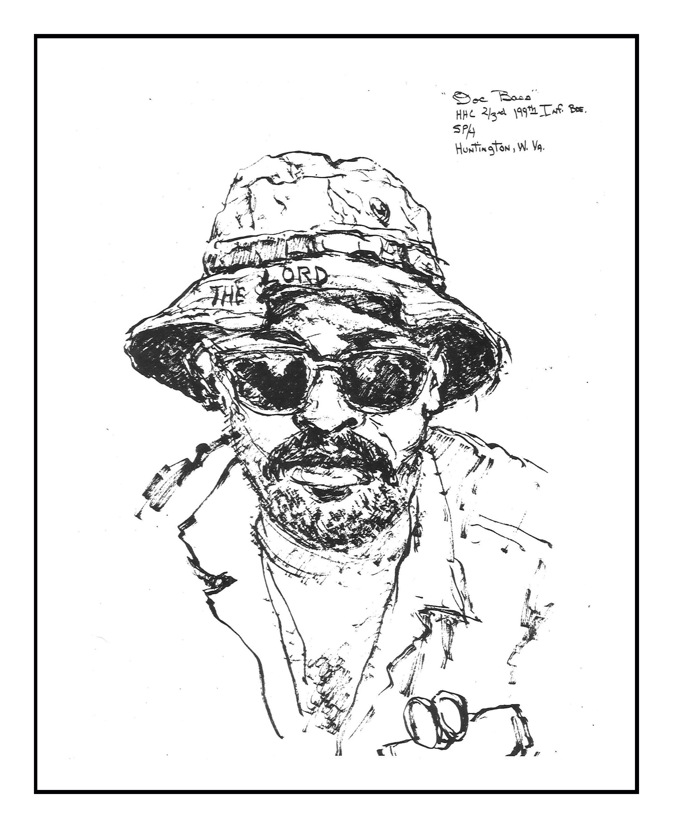
"Doc" Bass, HHC 2/3rd Infantry
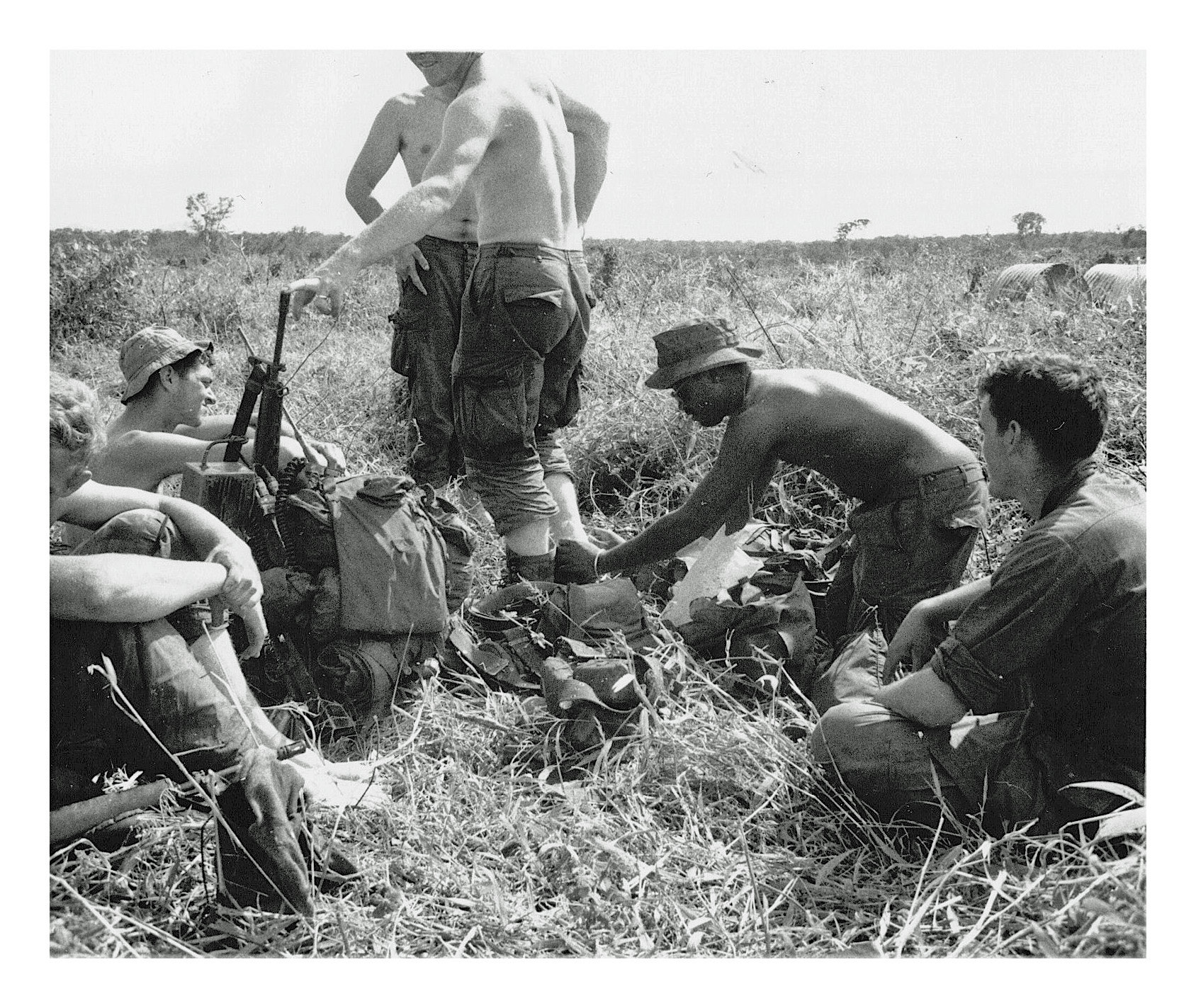
Doc Bass, center, taking care of a soldier with jungle rot.
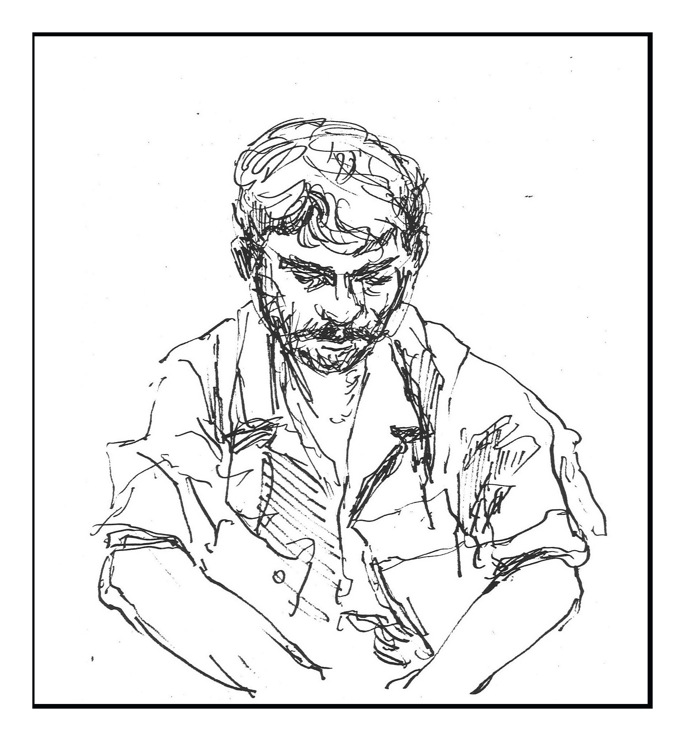
PFC Lamar Watts, Co. A 2/3
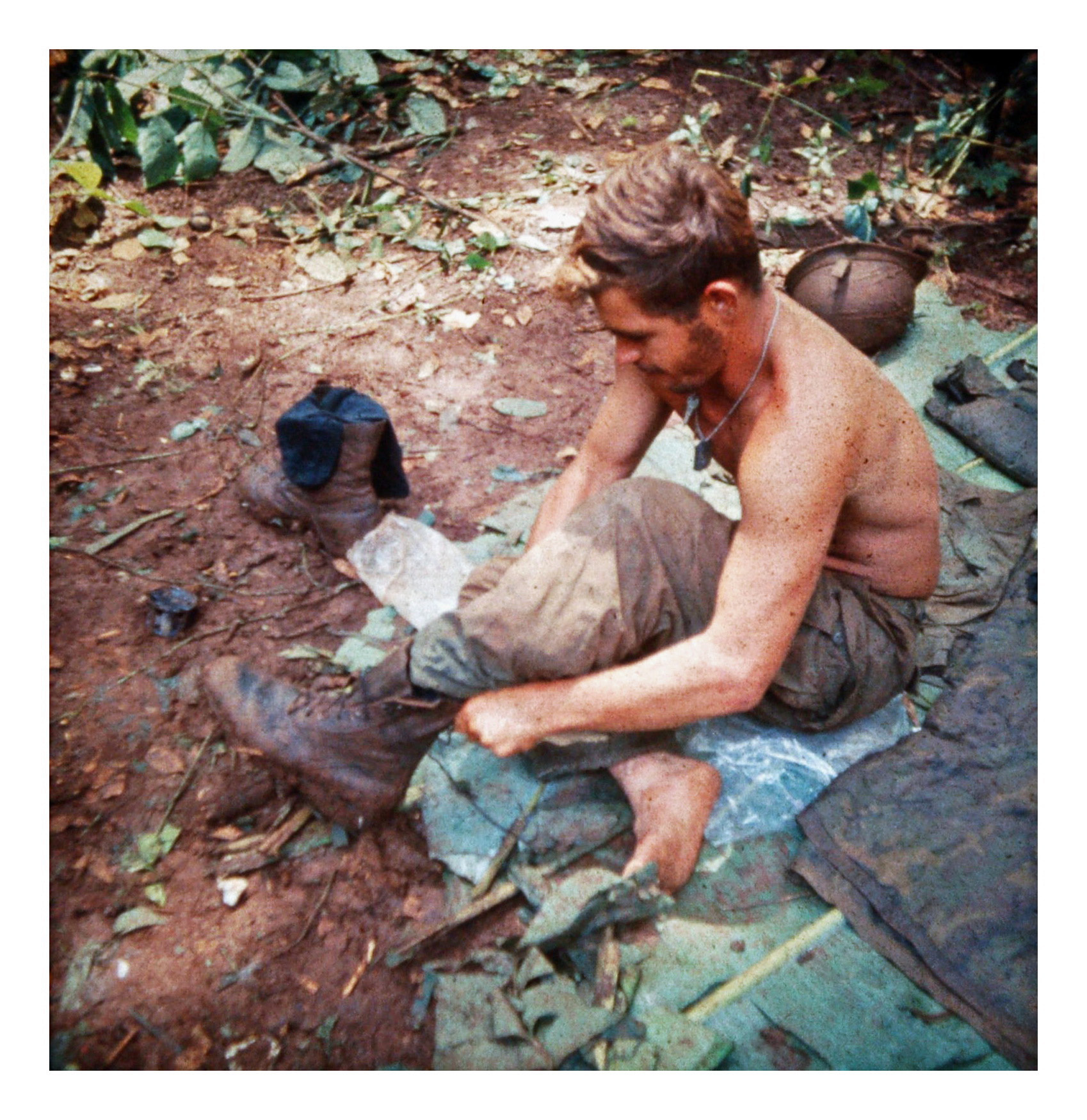
PFC Lamar Watts
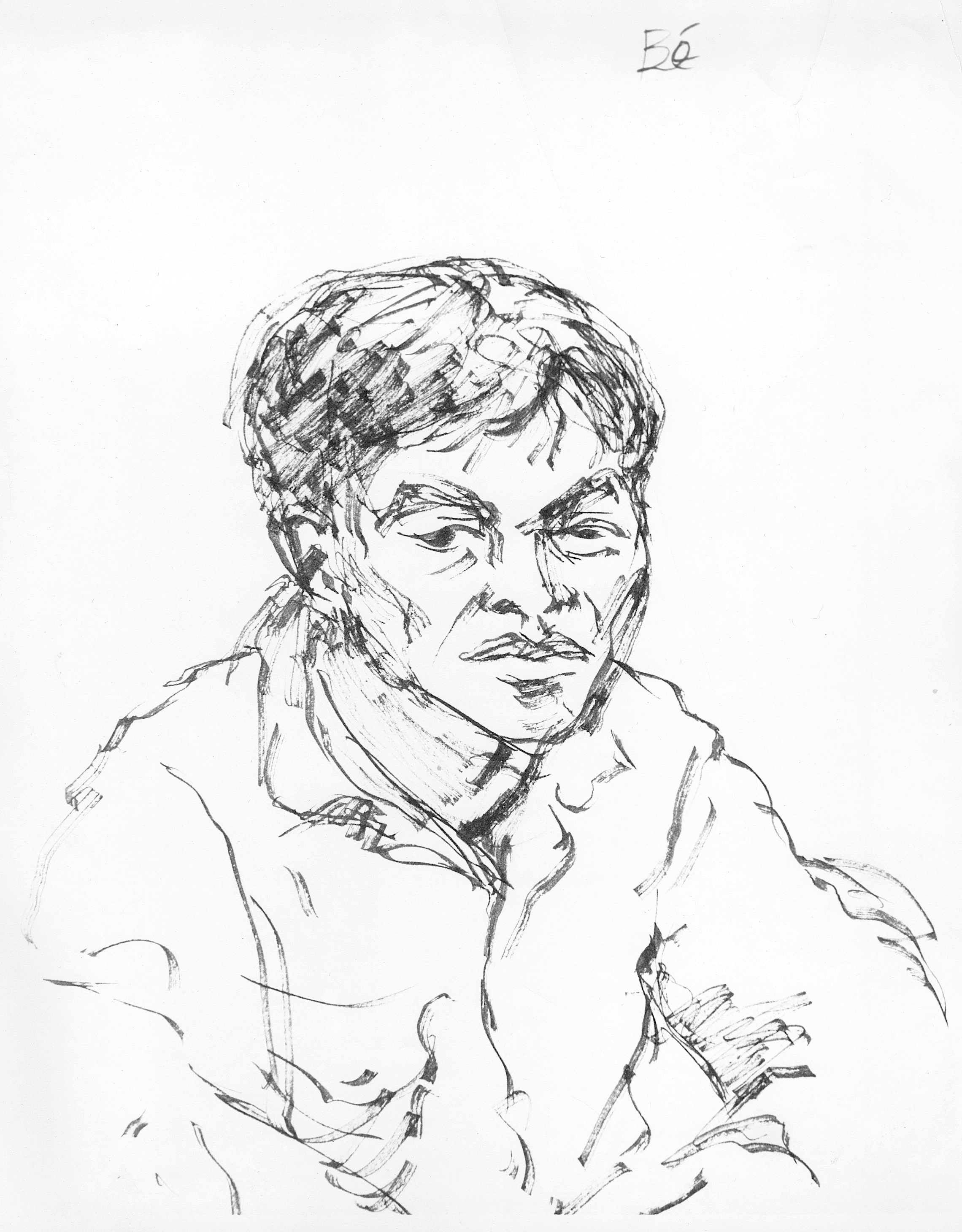
Kit Carson Scout working with Co. A 2/3

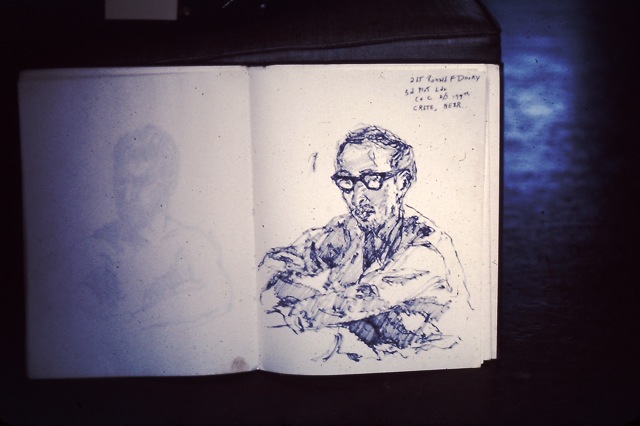
.jpeg?1651366333052)
SP4 Don Phillips, RTO, FSB Libby
PVT Claude Dean, FSB Libby
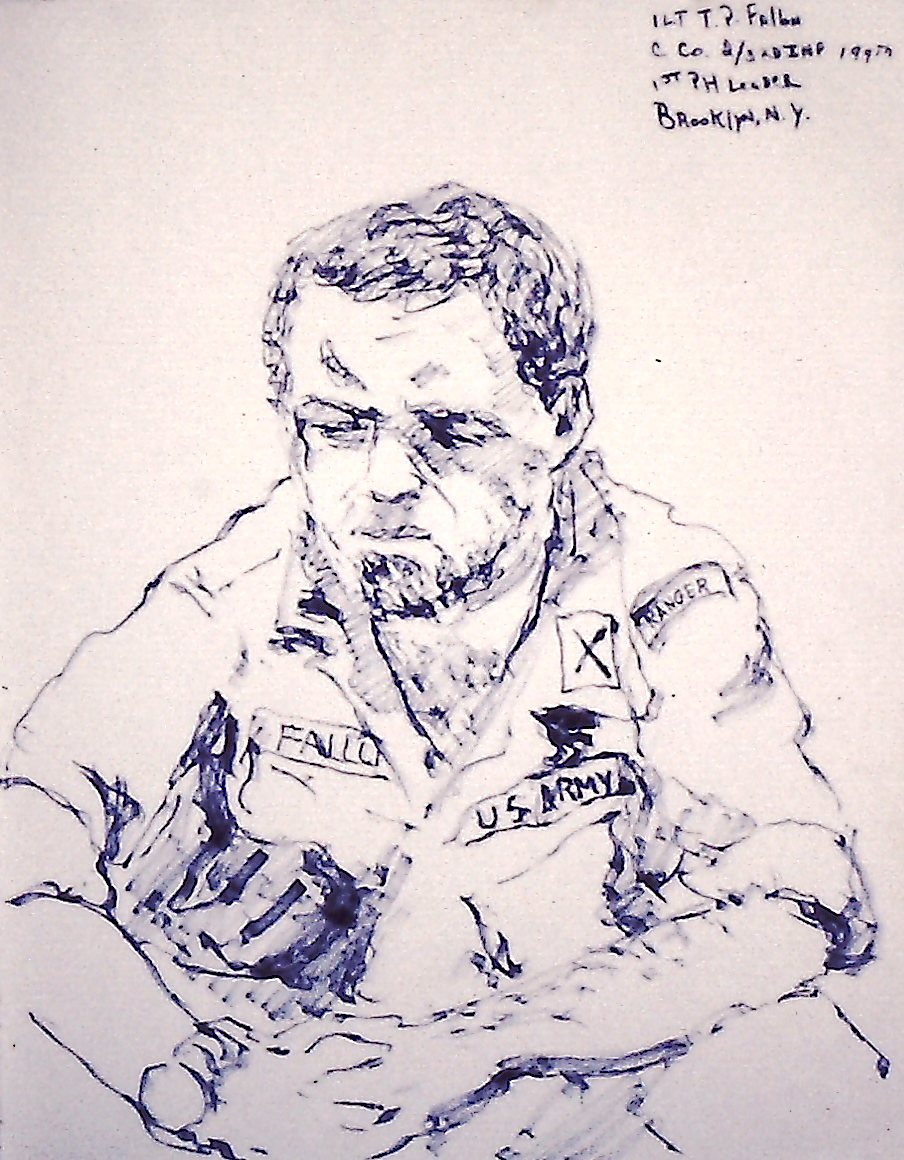
1LT T.P. Fallon, C Co. 2/3
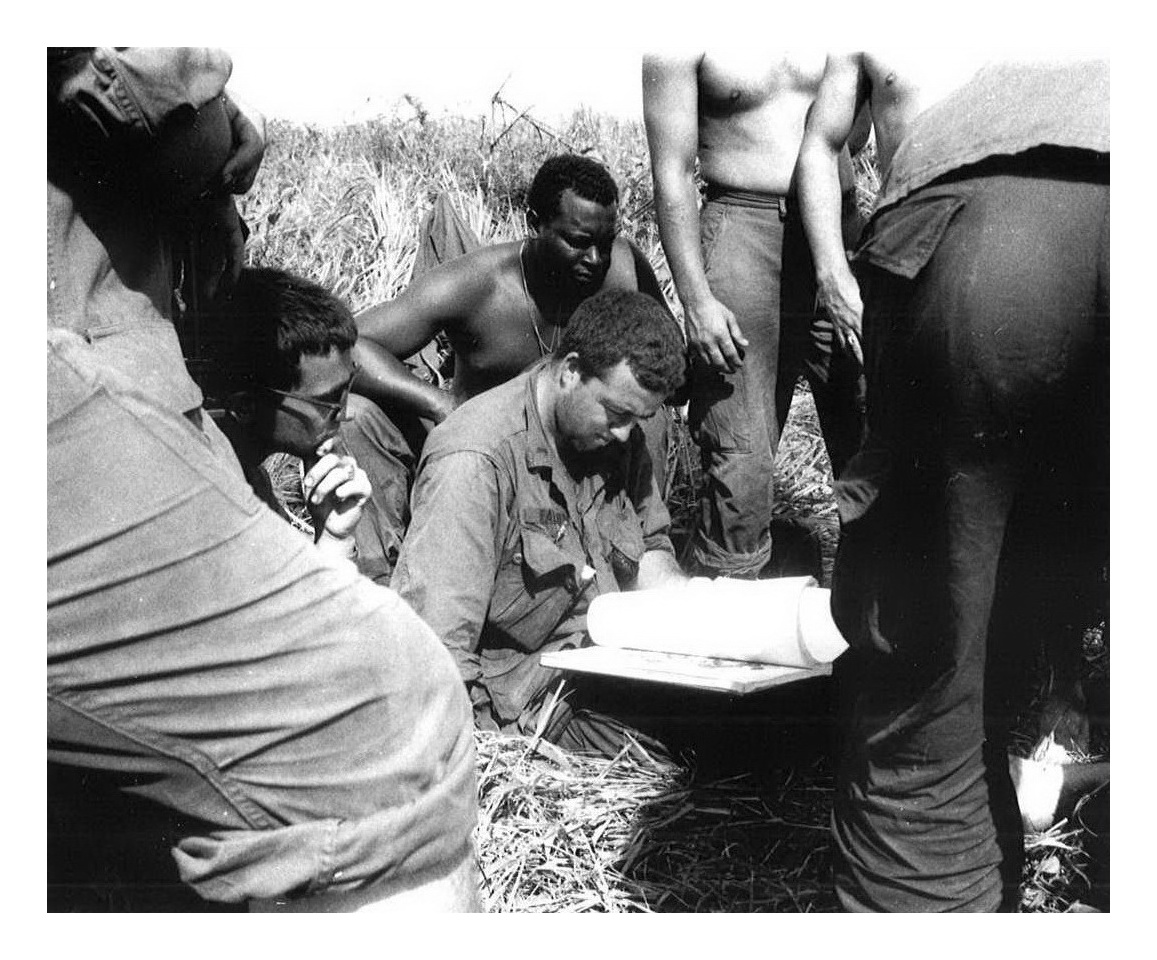
Lt. Fallon signs the above sketch as members of his platoon, including Lt. Little, left, look on.
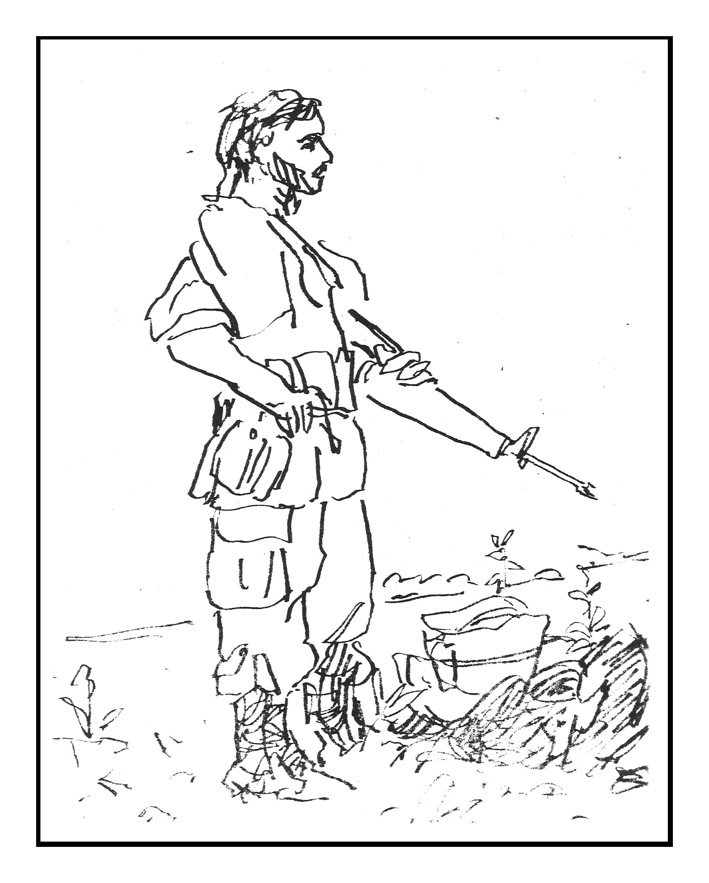
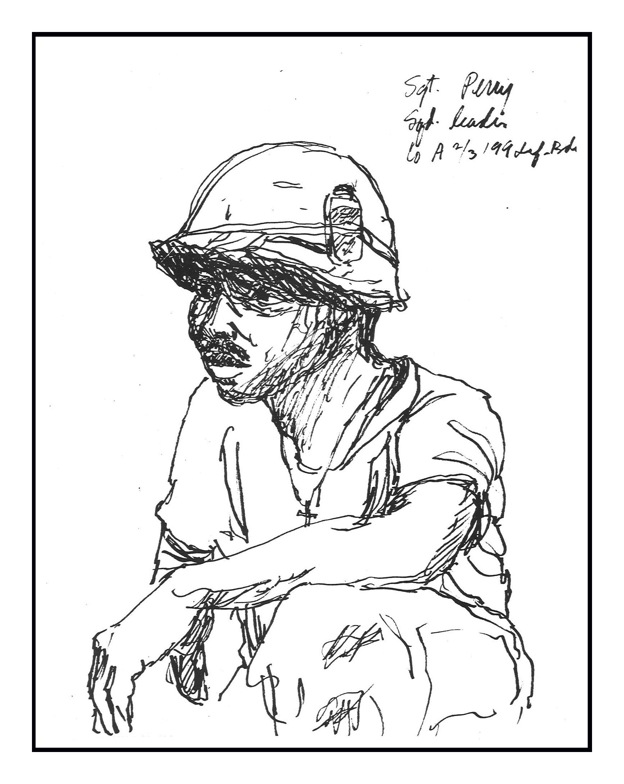
SGT Perry, Squad Leader, Co. A 2/3
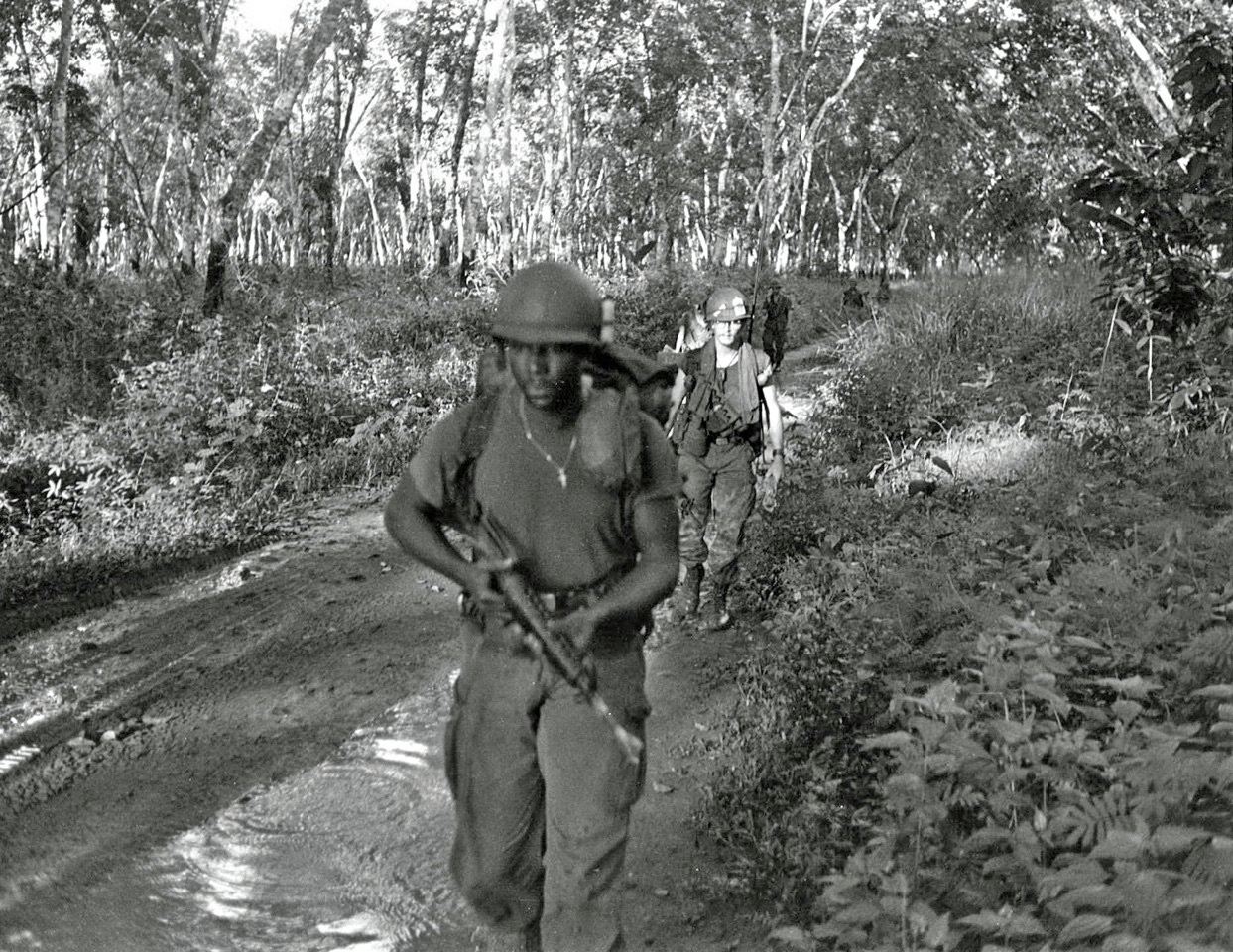
SGT Perry, front and Mark Muehe.
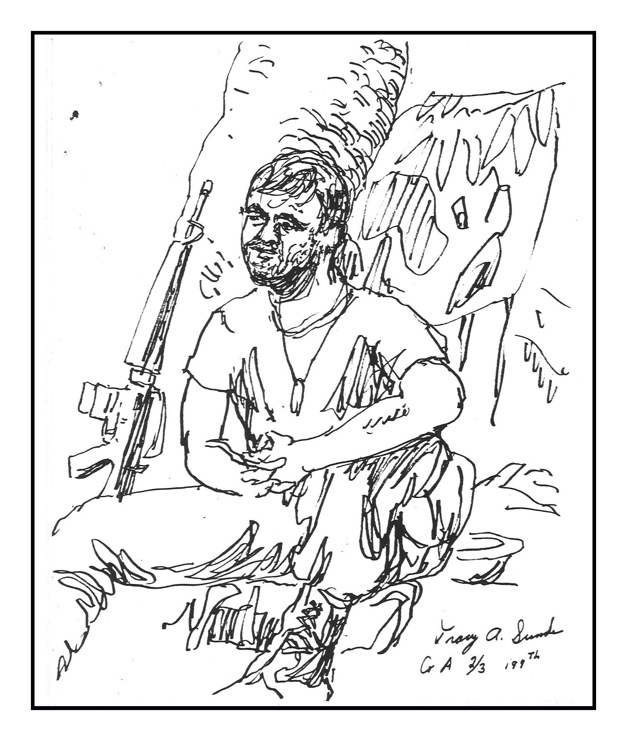
Tracy A. Sunde, Co. A 2/3 Infantry
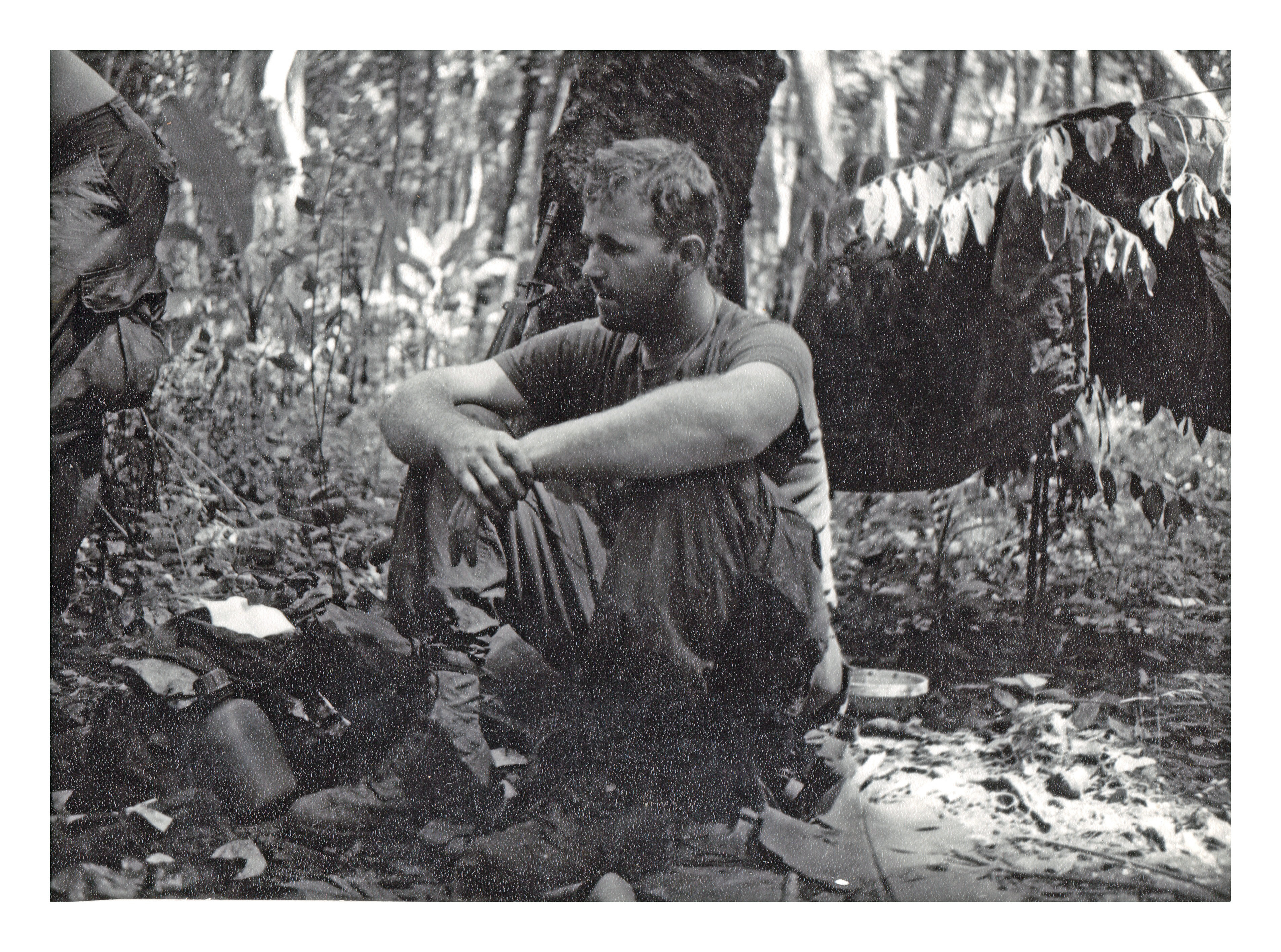
Tracy A. Sunde, above and below.
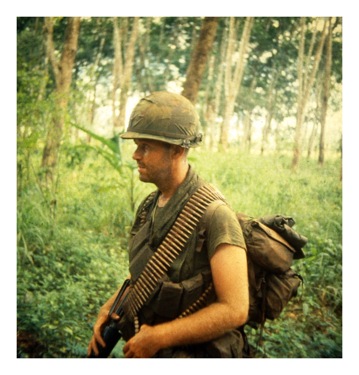
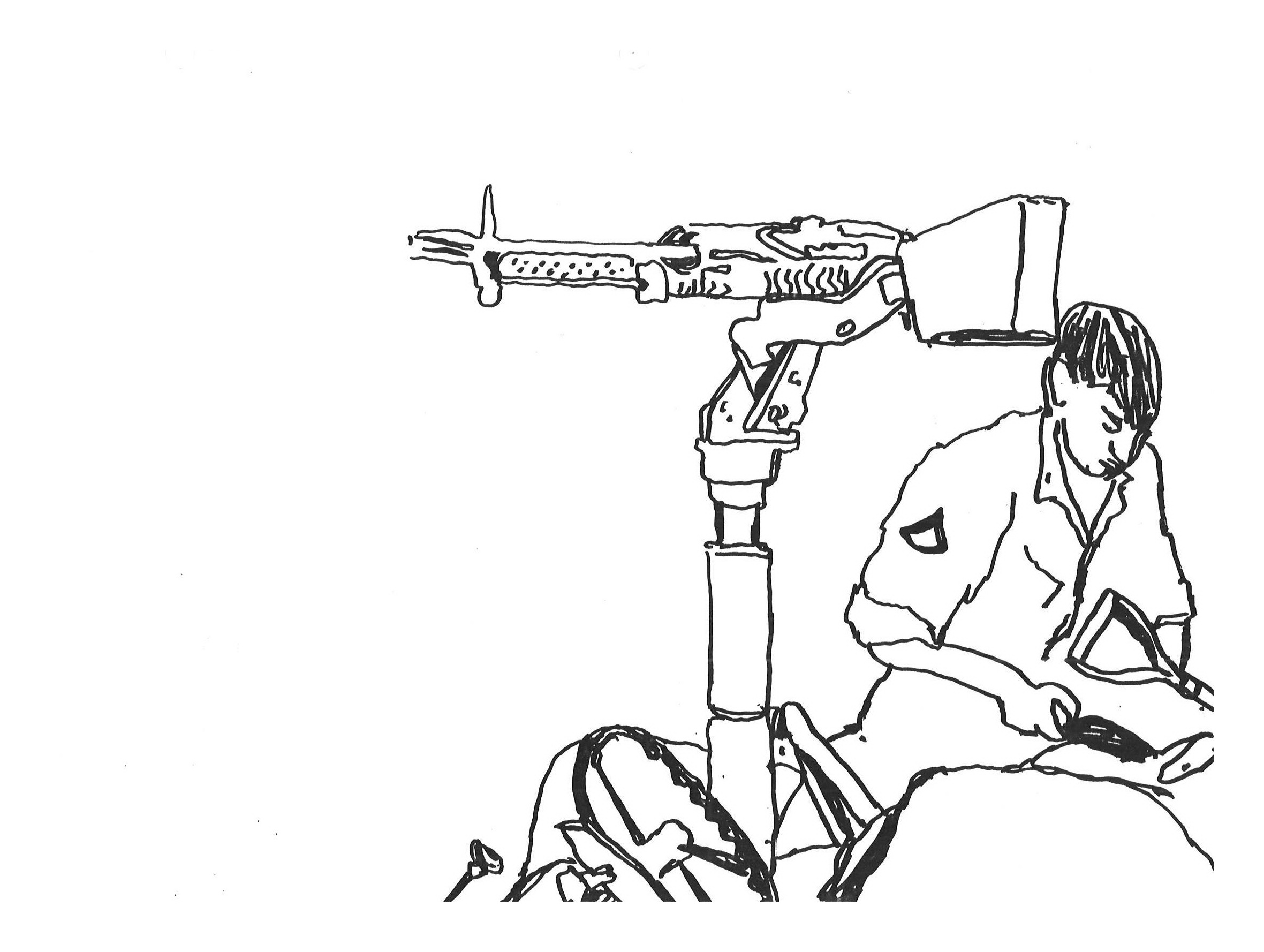
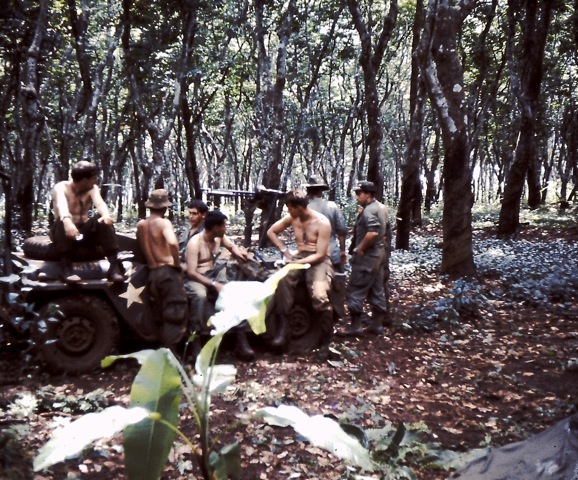
Jeeps from 2-3rd Infantry "Rat Patrol" that delivered Jim Hardy into the field with Alpha and Charlie Companies.
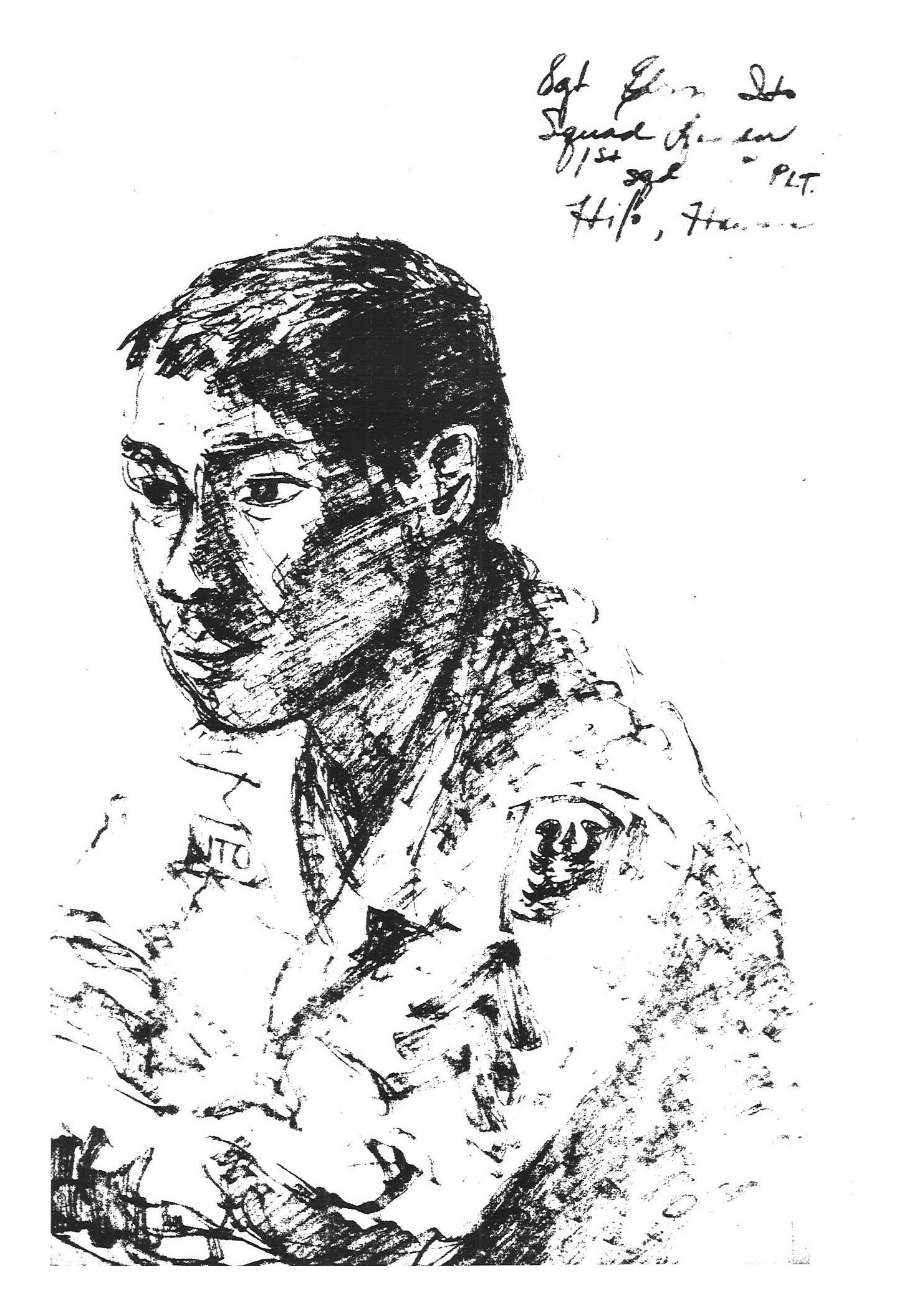
SGT Elroy Ito, 1st Squad, Co. C 2/3
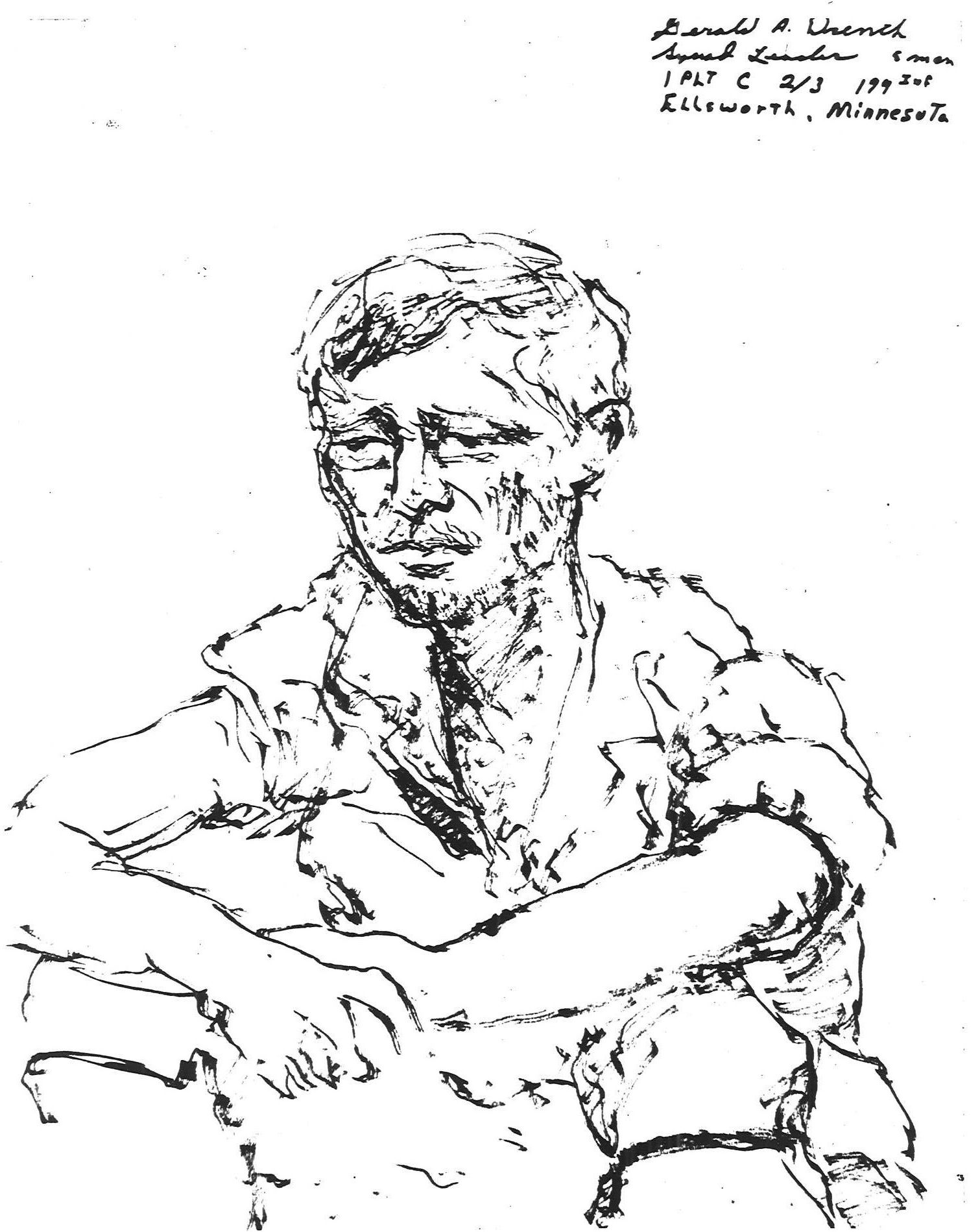
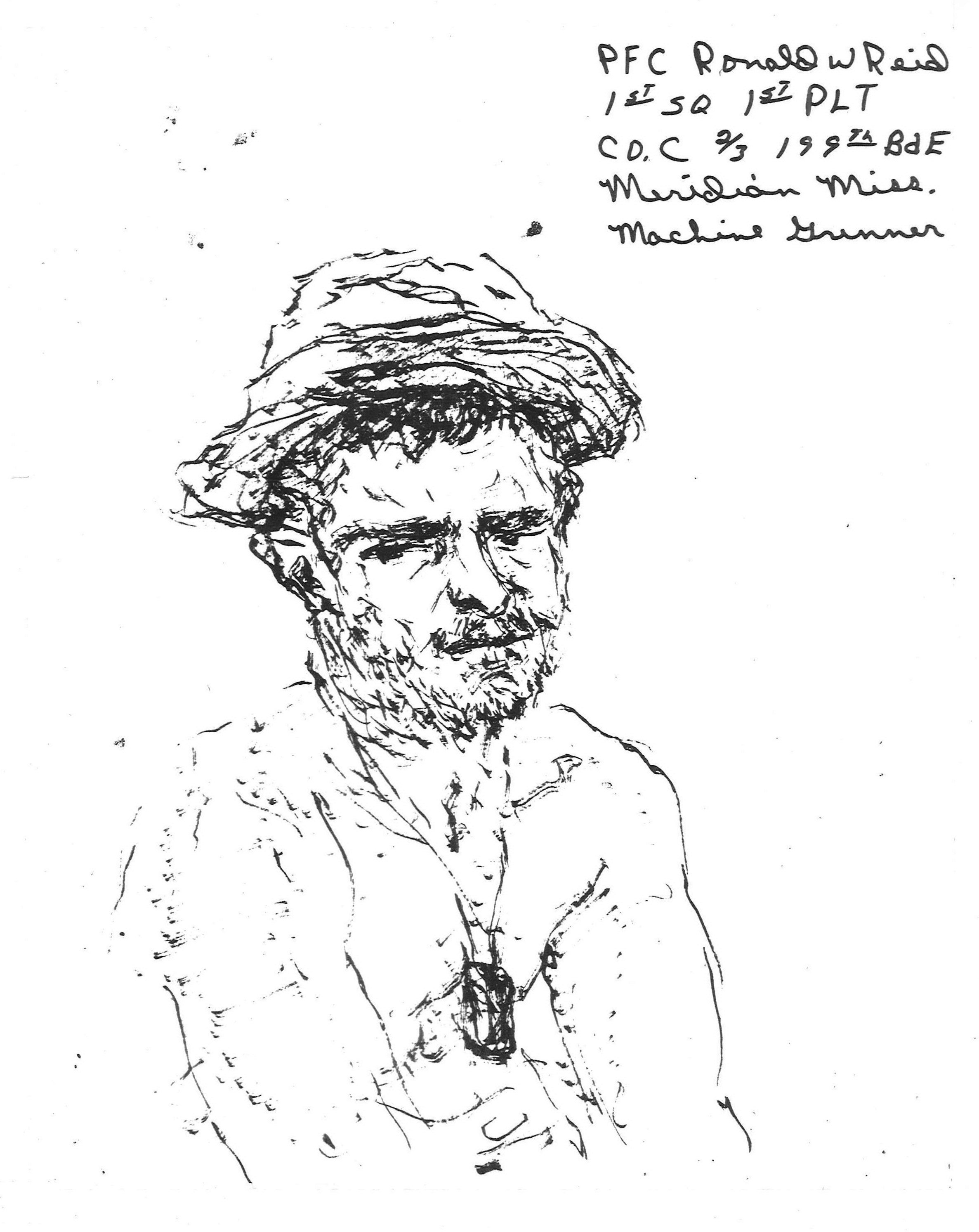
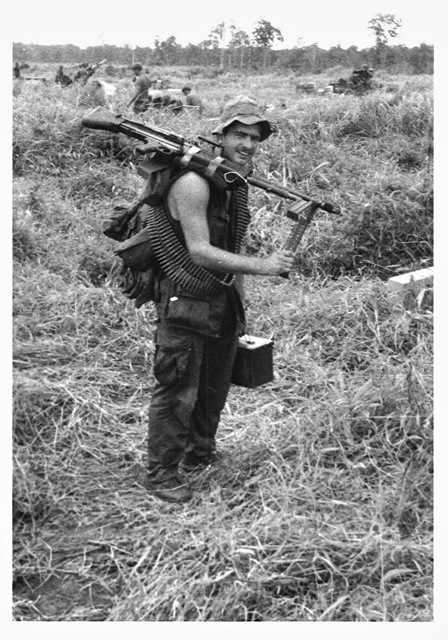
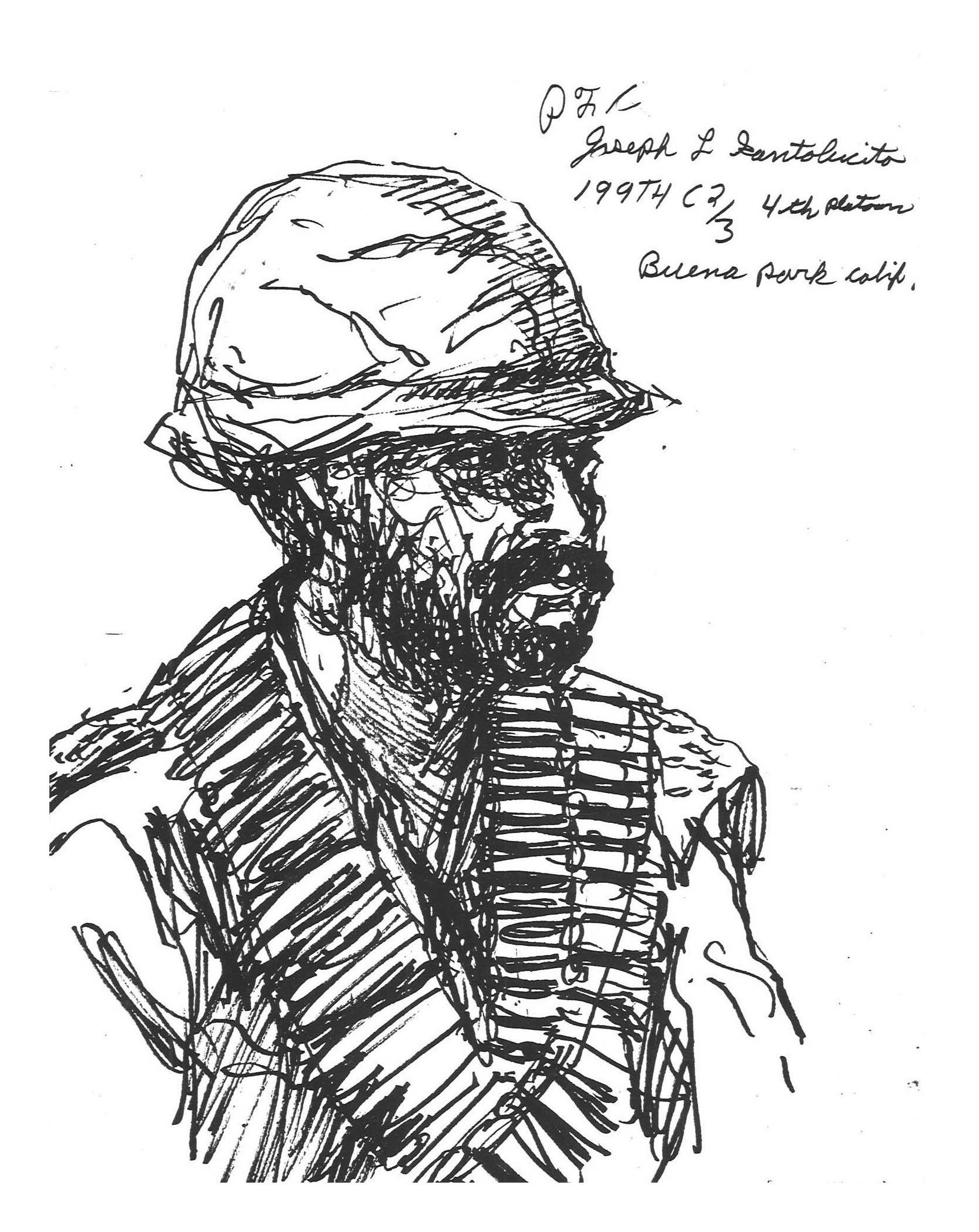
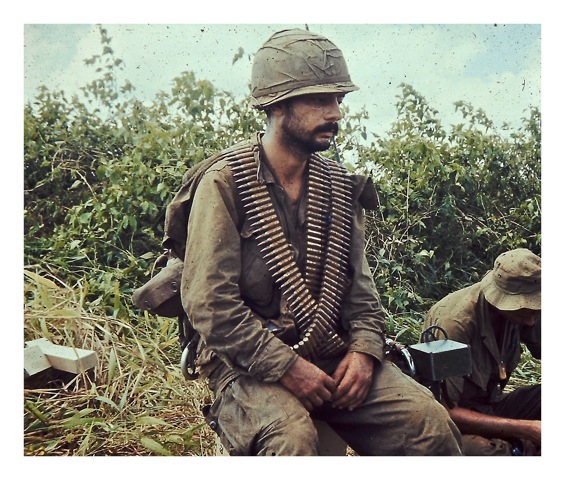
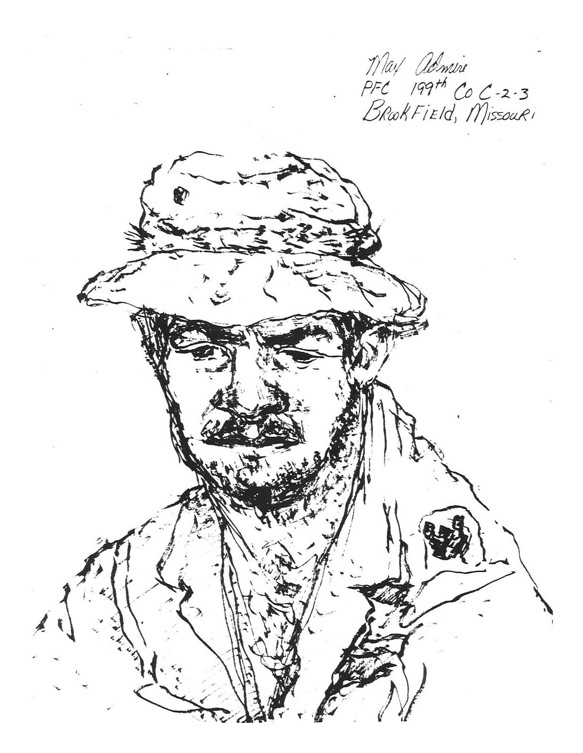
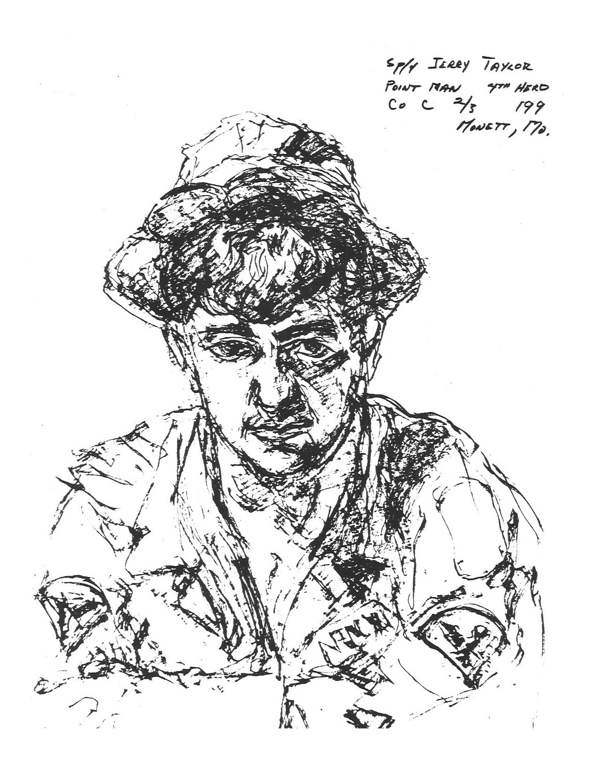
 - Copy_edited-1.jpg?1651366333041)